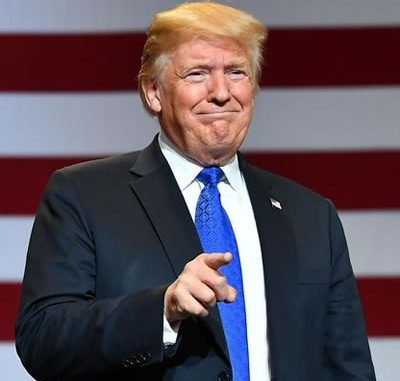
Latest efforts by President Donald Trump of the United States of America (USA) to sidestep stalled congressional negotiations over the next coronavirus aid package will do little to boost the country’s economy, experts have said.
As reported by Reuters, on Tuesday, the US president, last Saturday, introduced an executive order and a presidential memoranda which sought to temporarily extend enhanced unemployment benefits at a reduced amount of $400 a week and defer payroll taxes for some workers.
Trump’s attempt also sought to suspend federal student loan payments and potentially provide eviction relief, but economists said, even if he can overcome the legal questions surrounding his actions, the efforts may not pack much punch.
Mark Zandi, the chief economist at Moody’s Analytics, calculated the orders could provide just over $400 billion in total relief, just as JPMorgan Chase economist, Michael Feroli, in an email note, on Monday, said the initiatives could contribute “less than $100 billion” in stimulus.
That is against the $1 trillion aid package proposed by the Republican-led Senate or the more than $3 trillion aid bill passed by the Democrat-led House of Representatives.
Altogether, the president’s orders would add up to 0.2per cent of GDP, a “negligible amount,” according to estimates from Lydia Boussour, senior US economist for Oxford Economics.
Millions of jobless Americans could be financially squeezed this month after the expiration of a $600 weekly supplement to unemployment benefits, the winding down of eviction moratoriums across the country and the end of the Paycheck Protection Program, which supported small businesses.
Some of the measures proposed by Trump would take time to set up and could be challenged in court, experts said. “They’re not going to do anybody any good in the here and now,” Zandi added in an interview.
The president’s efforts may also not reach all of the workers relying on aid. For example, the $400 weekly supplement to unemployment benefits would only apply to people receiving at least $100 in state unemployment benefits and could exclude some low-income workers.
The added benefits, which would be financed by $44 billion from the Disaster Relief Fund, would only last about five or six weeks, Feroli estimates.
And the programme would put more pressure on states – which have already seen their budgets strained during the crisis – by requiring them to pay 25 per cent of the $400 supplement.
A measure that would defer employees’ share of the Social Security payroll tax from September through December is not expected to have a noticeable impact on spending because it helps people who are still working, wrote Boussour. Workers would still owe the taxes later.
As reported by Reuters, Trump’s policy move on housing may not lead to immediate relief for people who are falling behind on their rent or mortgage payments.
The president asked the heads of Housing and Urban Development and the US Treasury to look into ways to provide assistance to renters and homeowners and to research legal actions that could help to avoid evictions and foreclosures – rather than spelling out any concrete actions.
The measure that is most likely to become reality is the extension of a freeze on federal student loan payments, Zandi said. That is set to expire Sept. 30; Trump’s measure would extend it through the end of the year.
The step could save borrowers $15 billion to $20 billion, Zandi estimated, adding: “For the students that’s a big deal, but for the macro economy in a crisis, it’s really not meaningful.”

Leave a Reply